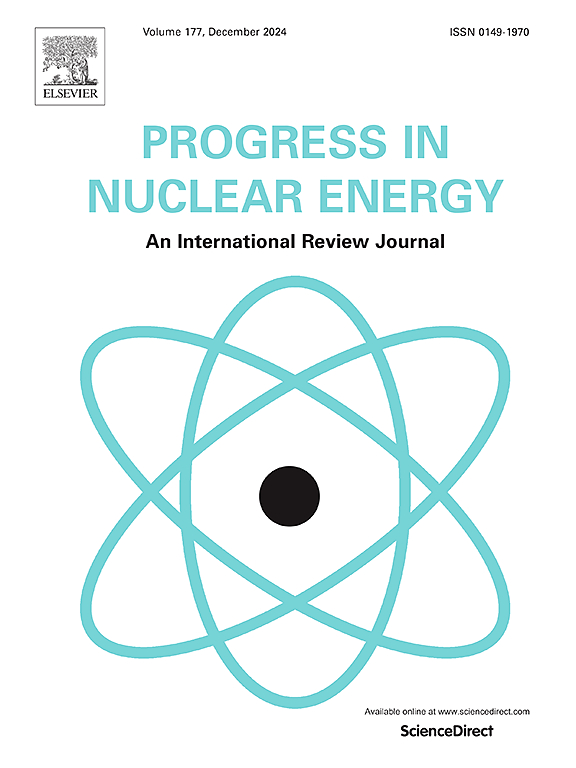Research on fluctuation attenuation and optimization of passive residual heat removal system based on spring vibrator
IF 3.3
3区 工程技术
Q1 NUCLEAR SCIENCE & TECHNOLOGY
引用次数: 0
Abstract
The potential for flow and pressure fluctuation in passive residual heat removal systems (PRHRS) to result in equipment damage underscored the necessity for the development of effective mitigation strategies. In order to reduce the flow instabilities that occurs in the PRHRS, the idea of a fluctuation attenuation scheme based on a spring vibrator structure had been proposed. The structure was based on pressure pulsation attenuator in hydraulic systems and had been optimized. A model of a spring vibrator fluctuation attenuation pipe section was developed and its fluctuation attenuation effect was verified under specific parameters. Such as branch pipe length, cavity cross-sectional area, spring vibrator position, spring vibrator stiffness coefficient, and piston mass. The impact of these factors on fluctuation attenuation was investigated. The results demonstrated that, under identical inlet fluctuation conditions, the fluctuation peak at outlet of the pipe containing spring vibrator structure decreased. The optimization of the above parameters had been demonstrated to enhance the fluctuation removal effect of the spring vibrator structure. This study presented a novel approach to relieve flow instability in PRHRS.
求助全文
约1分钟内获得全文
求助全文
来源期刊

Progress in Nuclear Energy
工程技术-核科学技术
CiteScore
5.30
自引率
14.80%
发文量
331
审稿时长
3.5 months
期刊介绍:
Progress in Nuclear Energy is an international review journal covering all aspects of nuclear science and engineering. In keeping with the maturity of nuclear power, articles on safety, siting and environmental problems are encouraged, as are those associated with economics and fuel management. However, basic physics and engineering will remain an important aspect of the editorial policy. Articles published are either of a review nature or present new material in more depth. They are aimed at researchers and technically-oriented managers working in the nuclear energy field.
Please note the following:
1) PNE seeks high quality research papers which are medium to long in length. Short research papers should be submitted to the journal Annals in Nuclear Energy.
2) PNE reserves the right to reject papers which are based solely on routine application of computer codes used to produce reactor designs or explain existing reactor phenomena. Such papers, although worthy, are best left as laboratory reports whereas Progress in Nuclear Energy seeks papers of originality, which are archival in nature, in the fields of mathematical and experimental nuclear technology, including fission, fusion (blanket physics, radiation damage), safety, materials aspects, economics, etc.
3) Review papers, which may occasionally be invited, are particularly sought by the journal in these fields.
 求助内容:
求助内容: 应助结果提醒方式:
应助结果提醒方式:


